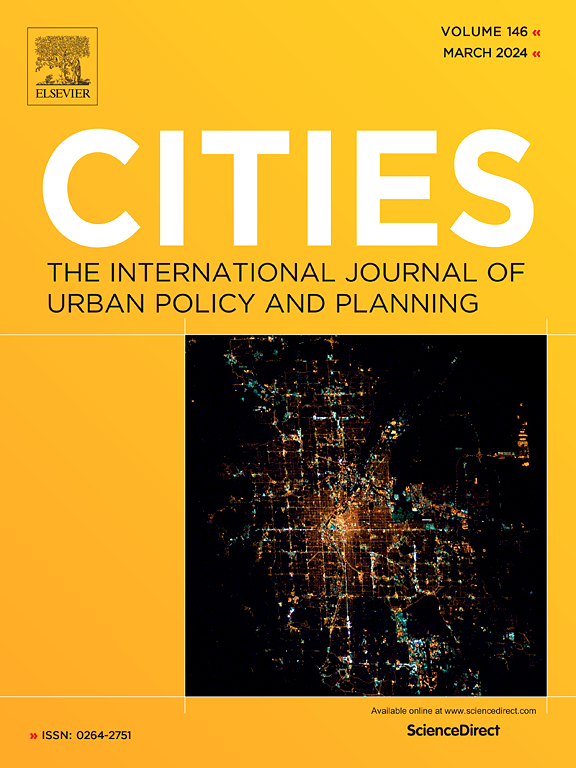Understanding urban community structure at multiple levels through crowd mobility
IF 6.6
1区 经济学
Q1 URBAN STUDIES
引用次数: 0
Abstract
Current research on urban community structure primarily focuses on a single level and often overlooks the associations among multiple regions within a city when detecting community structures. In this regard, this research employs a hypergraph model—capable of capturing multi-region relationships—and applies a hierarchical clustering approach to reveal a multi-level urban community structure. We conduct an empirical study of Shanghai's multi-level community structure using cell phone signaling and land use data, demonstrating that the proposed method effectively detects communities. Our findings indicate that: 1) Compared to graphs, hypergraphs more effectively represent complex inter-regional relationships, thereby improving the effectiveness of community detection; 2) Shanghai exhibits a structural pattern of multifunctional areas radiating from the city center, characterized by a high degree of land-use mixing; 3) Discrepancies exist between community structures derived from real crowd flow data and those envisioned in urban planning schemes, with certain communities merging or splitting. The model presented in this study can monitor current urban community structures and, when compared with established urban planning, guide more rational urban development. Additionally, it provides a method to support multi-relationship, multi-level studies of phenomena such as the urban heat island effect and traffic congestion.
通过人群流动多层次地理解城市社区结构
目前对城市社区结构的研究主要集中在单一层面,在检测社区结构时往往忽略了城市内多个区域之间的联系。在这方面,本研究采用了一个能够捕捉多区域关系的超图模型,并采用分层聚类方法来揭示多层次的城市社区结构。利用手机信号和土地利用数据对上海市多层次社区结构进行了实证研究,结果表明该方法能够有效地检测社区。研究结果表明:1)与图相比,超图更有效地表征了复杂的区域间关系,从而提高了社区检测的有效性;(2)上海呈现出以城市中心为辐射中心的多功能区结构格局,土地利用混合度高;3)实际人群流量数据得出的社区结构与城市规划方案设想的社区结构存在差异,部分社区合并或分裂。本研究提出的模型可以监测当前的城市社区结构,并与既定的城市规划相比较,指导更合理的城市发展。此外,它还为城市热岛效应和交通拥堵等现象的多关系、多层次研究提供了一种方法。
本文章由计算机程序翻译,如有差异,请以英文原文为准。
求助全文
约1分钟内获得全文
求助全文
来源期刊

Cities
URBAN STUDIES-
CiteScore
11.20
自引率
9.00%
发文量
517
期刊介绍:
Cities offers a comprehensive range of articles on all aspects of urban policy. It provides an international and interdisciplinary platform for the exchange of ideas and information between urban planners and policy makers from national and local government, non-government organizations, academia and consultancy. The primary aims of the journal are to analyse and assess past and present urban development and management as a reflection of effective, ineffective and non-existent planning policies; and the promotion of the implementation of appropriate urban policies in both the developed and the developing world.
 求助内容:
求助内容: 应助结果提醒方式:
应助结果提醒方式:


